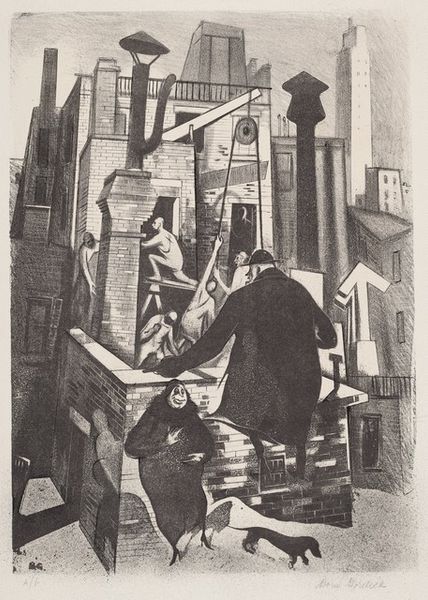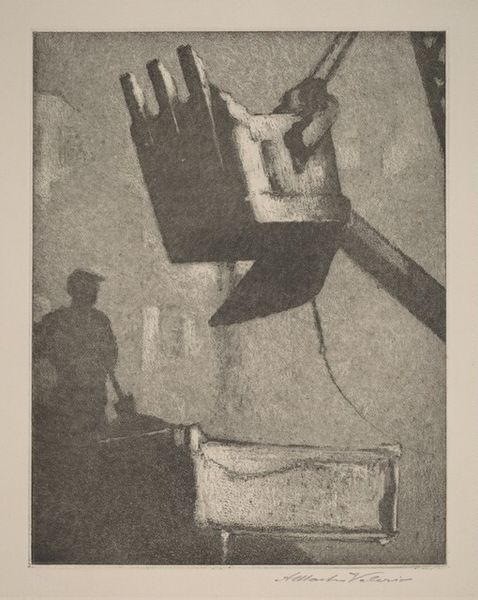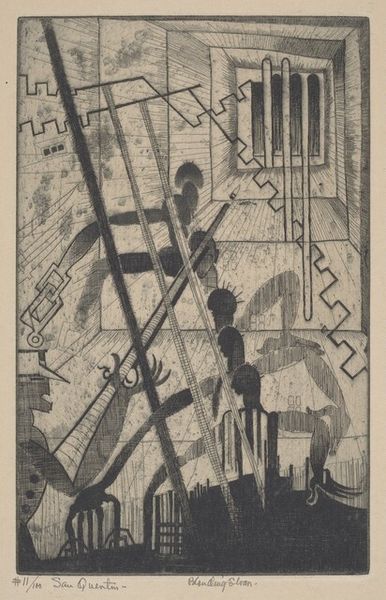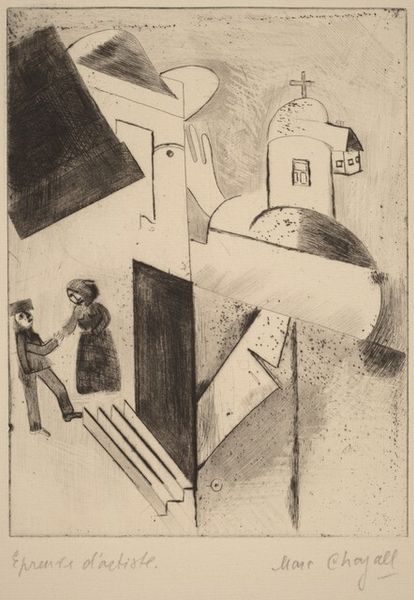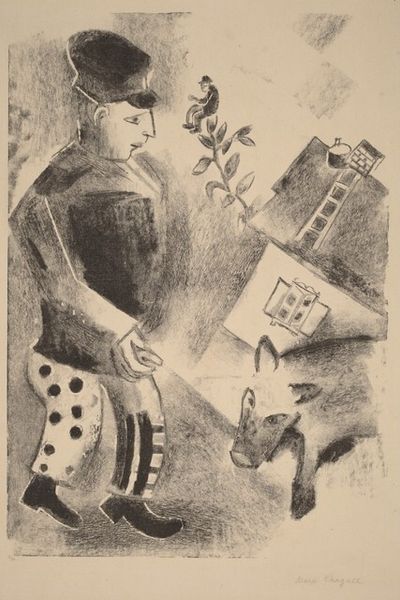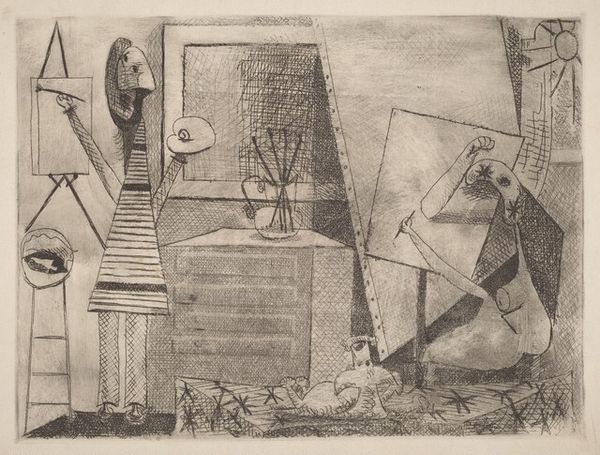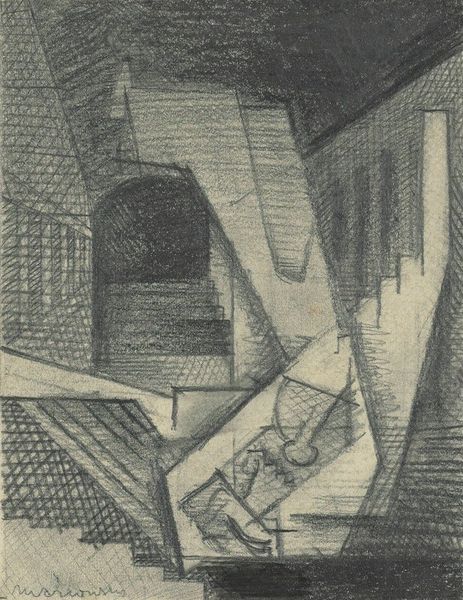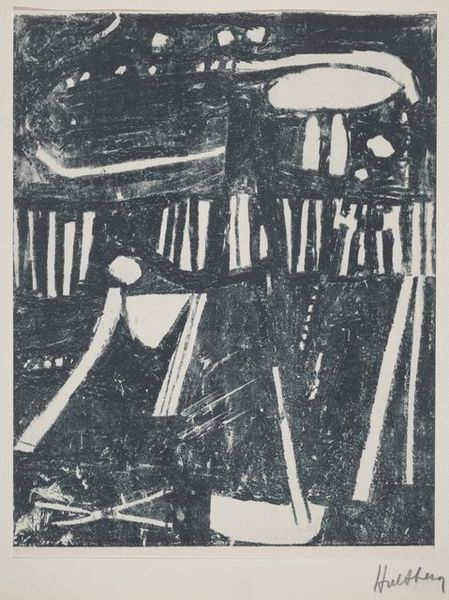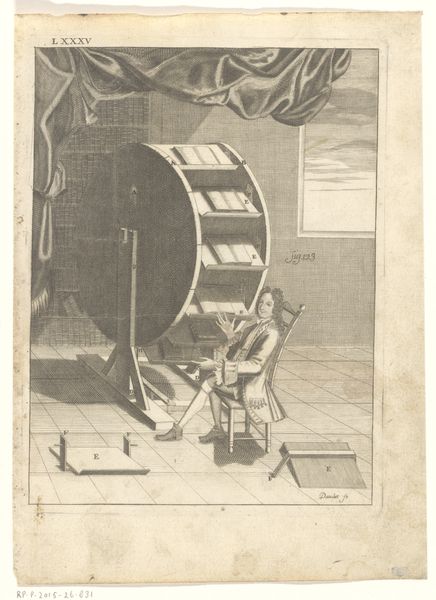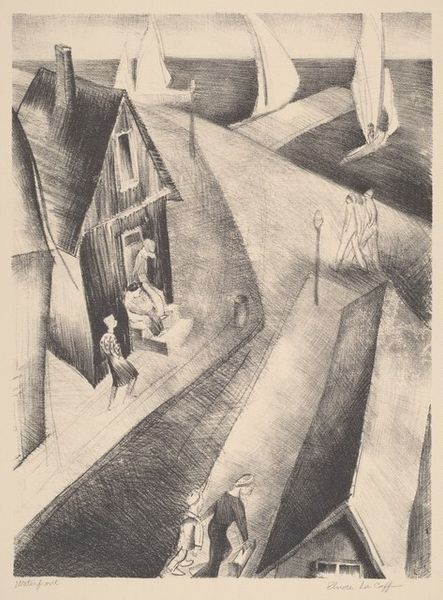
drawing, print, linocut, pencil, woodcut
#
pencil drawn
#
drawing
# print
#
linocut
#
pencil sketch
#
landscape
#
figuration
#
pencil drawing
#
pencil
#
woodcut
#
genre-painting
#
regionalism
Dimensions: Image: 284 x 229 mm Sheet: 434 x 301 mm
Copyright: National Gallery of Art: CC0 1.0
Editor: This is Edgar Dorsey Taylor’s "The U.V.X. Jerome," a print created in 1940, using linocut and woodcut techniques alongside pencil drawings. I find it powerful in its simplicity. What do you see in this piece, considering it was made during a time of immense social upheaval? Curator: Well, what strikes me immediately is the focus on labor. The artist isn’t just depicting a landscape, they're documenting the *making* of that landscape, the ways in which human activity and industrial processes are reshaping the world. We need to look closely at the material processes represented here. Linocut and woodcut themselves are labor-intensive printing methods. Consider how the artist is engaging with and elevating those often under-recognized skills. Editor: So, it’s a commentary on labor through its very creation and subject? The Regionalist style suggests a certain focus on ordinary people... Curator: Exactly! Taylor uses this combination of printing methods to give a voice to the working class, depicting them within their specific environments and social conditions. Think about how industrial technologies would be made available for the general public at that time. Were these images meant to be seen just by people within the community, or were they circulated and sold broadly to those outside the working class? Editor: That’s a fascinating point! It makes me think about how the printmaking process democratizes art, making it more accessible to a wider audience beyond just a wealthy elite. Thank you, I had not considered these implications before. Curator: Understanding the *how* – the processes and materials used – helps us to unpack the *why*. It's about valuing both the artistic labor and the labor depicted within the work.
Comments
No comments
Be the first to comment and join the conversation on the ultimate creative platform.
